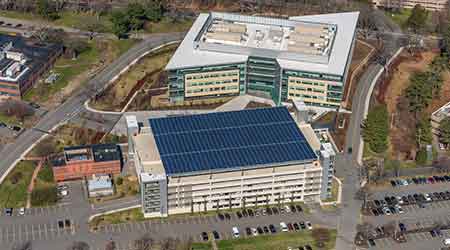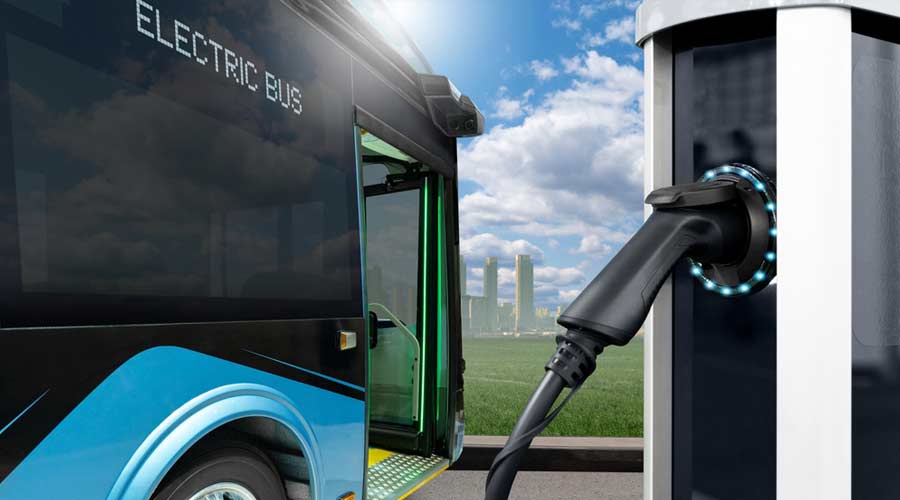 As part of the repositioning of a three-story, 80,000-square-foot building in Waltham, Mass., into Class A office space, Hobbs Brook Management installed solar arrays as parking canopies to help realize energy efficiency while giving parking areas a distinctive presence and offering tenant comfort.Warren Patterson Photography
As part of the repositioning of a three-story, 80,000-square-foot building in Waltham, Mass., into Class A office space, Hobbs Brook Management installed solar arrays as parking canopies to help realize energy efficiency while giving parking areas a distinctive presence and offering tenant comfort.Warren Patterson Photography4 Steps for Planning Solar Power Canopies in Parking Areas
The benefits extend beyond energy production. Thoughtfully designed solar canopies reduce winter maintenance and give parking areas a distinctive presence.
The adoption of solar technology offers a substantial opportunity to make a meaningful reduction in a building’s carbon footprint while also having significant economic benefits and enhancing building marketability. A thoughtful design approach that situates solar arrays atop parking garages or above parking lots extends savings far beyond energy production, benefitting the bottom line by reducing winter maintenance and other operational costs, while giving parking areas a distinctive presence and offering tenants an extra comfort perk. This innovative approach to sustainability promotes operational longevity and, as an added benefit, offers a way to install solar panels without the need to puncture building roof membranes.
Solar power generation can be made most effective when it starts with quality design and construction. Upgrading a property with solar technology should not be done in haste; a properly planned system results in maximized efficiency and eliminates difficulties post-construction. Four planning factors have a major impact on success:
1. Involve the state or local government early in the design process. Facility managers and building owners should approach a solar project as they would any other construction project. To avoid costly and time-consuming adjustments later, governing agencies should be included early in the process to ensure the design meets necessary permit requirements. When solar was introduced many years ago, small towns and municipalities were often apprehensive about having a large electrical apparatus attached to their utility infrastructure. Solar is now a proven technology widely recognized as an energy generator and saver, making decision-makers more receptive.
2. Be neighborly and conduct glare studies. The most productive angle to get the highest performance possible from your solar array could potentially have a negative impact on adjacent properties. Imagine the mid-day glare of sunshine bouncing off a commercial solar array – and into the windows of commercial or even residential neighbors. A glare study will uncover any possible issues and allow the design to be tweaked to mitigate the unwelcome effect. Sometimes adjusting the angle by a mere degree can reduce the glare on a neighbor. However, design modifications to alleviate the glare should be thoroughly analyzed to substantiate that the potentially less productive design remains efficient and has a sufficient return on investment. Transparency throughout the design phase demonstrates your trustworthiness as a good neighbor and community partner.
3. Work with experienced vendors. The effort to design and build efficient solar power systems is more successful when partnering with construction companies committed to high-quality construction as well as having experience with solar. They need the expertise to install the solar structures on existing parking garages without jeopardizing roof warranties and the garage itself. Great care must be taken to install the modules so they perform properly at optimal design capacity. In addition, the connection of solar arrays to an internal facility monitoring and testing system necessitates the expertise of an experienced construction company.
4. Create a logistics plan. Construction of a canopied roof solar array will temporarily remove a significant amount of parking at an actively used parking garage. The establishment of a proper logistics plan should take into consideration the high-traffic times for the building occupants and include designated areas for parking with a free shuttle service if needed. Preparing tenants well in advance for the upcoming inconvenience and offering regular updates throughout the project duration helps lessen frustration.
Related Topics:














